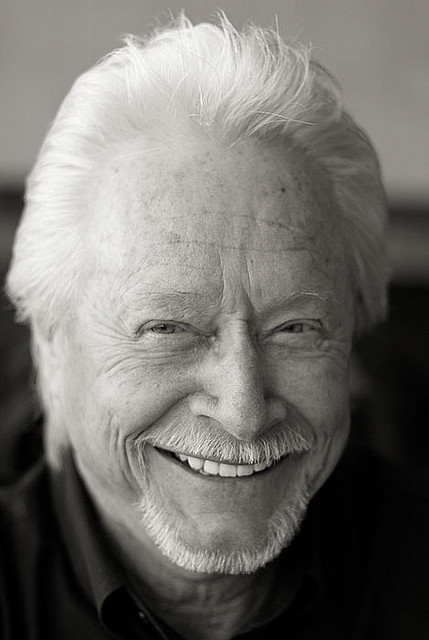
АРЛЕН НЕСС (ARLEN NESS). Крестный отец кастомайзинга
АРЛЕН НЕСС (ARLEN NESS). Крестный отец кастомайзинга
|
Знатоки и ценители кастомайзинга всего мира называют Арлена Несса «Крестным отцом» не только потому, что он может сделать вам предложение, «от которого Вы не сможете отказаться», но и в знак уважения к достижениям за всю его продолжительную и невероятно успешную карьеру. В свои 67 он №1 в мире и патриарх в производстве мотоциклов на заказ — кастомов.
В то время, когда редкие экземпляры мотоциклов были еще
доморощенными продуктами умельцев, с их сварочными газовыми горелками,
ножовками по металлу, тисками и канистрами черной краски, Арлену Нессу
был больше по душе стиль «барокко». Он ввел в дизайн мотоцикла
позолоченные части, декоративную гравировку, украсил резьбой по
алюминию элементы трансмиссии, и раскрасил листовые поверхности
основных рамных элементов в довольно смелые и уж совсем «не
мотоциклетные» цвета. Плюшевая и велюровая обивка украсила сиденья.
Арлен придумал установить 2 двигателя в один мотоцикл, что было
невероятно для многих, но совершенно нормально для него. Он поместил
их в Ironhead Sportster, и таким образом намного увеличил его
энерговооруженность.
Арлен начал работать в своем бизнесе, что называется full time или
«полный день», сначала только раскрашивая мотоциклы и используя как
начальный капитал средства, полученные от игры в боулинг. Позже он
расширил свою деятельность и начал изготавливать вручную запасные
части для тюнинга на заказ и также устанавливать их на мотоциклы. "Это
было выше моих самых дерзких мечтаний”, говорит он о том периоде.
Теперь Арлен уделяет очень много времени езде на своих мотоциклах,
намного больше, чем раньше. Каждый год он ездит в Sturgis. Несколько
раз в год он встречается со своими приятелями, которые сформировали
клуб, состоящий из владельцев эксклюзивных мотоциклов и нескольких
кастомайзеров, таких как Дейв Перюитз и Бонни Смит (Dave Perewitz,
Bonnie Smith). Они называют себя «Хомяками» (Hamsters). Прозвище
«Хомяки» появилось сначала как шутка среди приятелей-байкеров, которые
обычно встречаются на главных собраниях байкеров, таких, какие
проходят в Sturgis каждое лето. А сегодня в мире уже существует
приблизительно 200 членов названного также клуба, которые носят желтую
футболку, украшенную этим забавным грызуном. В 2002 году Арлен и его
сын, Кори, который теперь управляет административной стороной бизнеса
и помогает в проектировании мотоциклов на заказ, провели заезд 100
«Хомяков» от Залива Сан-Франциско до Sturgis, который транслировался
по телевидению. «Хомяки» всегда умеют весело проводить время в пути,
куда бы ни лежал их путь. Нет никакой спешки, вечеринки в пути заранее
запланированы. «Приятно видеть много «своих» мотоциклов, пересекающих
пространство», — говорит Арлен. Основное правило этого клуба –
отсутствие строгих правил, но ты должен иметь кастом, и как правило
дважды с клубом посетить ралли «Черные Холмы» (Sturgis). Верхом на
своих байках они вместе здорово проводят время.
Штаб-квартира компании Arlen Ness Ent. в Калифорнии
Сегодня название Arlen Ness связывают уже не только с именем одного только Арлена. Сегодня говоря о бренде, говорят о семействе Нессов, об успешном фамильном бизнесе, о высоком стандарте качества, мастерстве и творчестве. «Нет маленькой или не важной работы, если работа должна быть сделана, ее надо делать,» — это своеобразный девиз фирмы. Кроме того, Кори и Арлен являются консультирующими дизайнерами компании Polaris, выпускающей современные мотоциклы Victory. А модель Vegas создана при их самом непосредственном участии. Они адаптировали и разработали новую линию тюнинга (навески) для этой техники, внесли изменения в дизайн серийных мотоциклов, придав каждому индивидуальность. Корпорация имеет лишь несколько официальных представительств в мире, одно из которых начало свою работу в России. Мы с удовольствием представляем вам полную линейку техники поставляемую напрямую от Ness Motorcycles LLC и весь спектр аксессуаров поставляемых от Arlen Ness Ent. |
Gibson Guitar Two Bad Smothness Strictly Business Chevybike Ferrari Avon Tyres Untouchable Alum Curvaceous Half & Half Ness Patrol |
Информация : http://www.7emotions.ru/design/web-cam/history.php#
Nessкончаемый кастомайзинг
Дмитрий Дольник
Мото №7 2008
Живой классик. Кастом-гуру. «Король чопперов». Или даже «Элвис Пресли
кастомайзинга», как однажды выразился его «коллега по цеху» Билли Лейн. В
конце концов, человек-легенда. Совершенно верно, все перечисленные эпитеты
предназначаются Арлену Нессу – человеку, чье имя давно и совершенно заслуженно
отождествляется у всей прогрессивной части человечества с понятием «мотоциклетный
кастомайзинг». А какой он, маэстро Несс, на самом деле – без ретуши, с глазу
на глаз? Я ехал на встречу с ним и, если честно, боялся. Боялся разрушить миф.
Миф о человеке, смысл жизни которого – Nessкончаемый кастомайзинг.
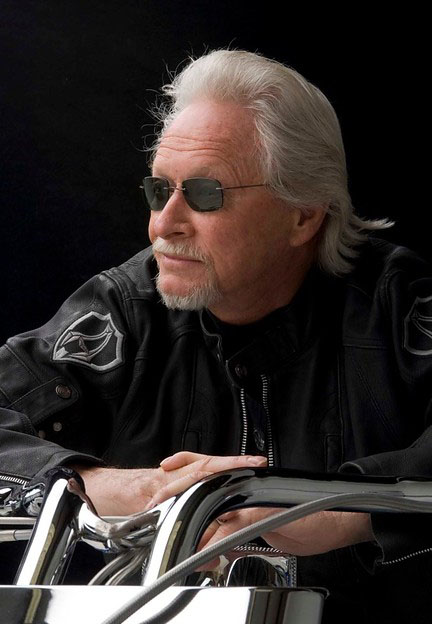
Судьба и творчество Арлена
Несса
ЗАНАЧКА В 300 «БАКСОВ»
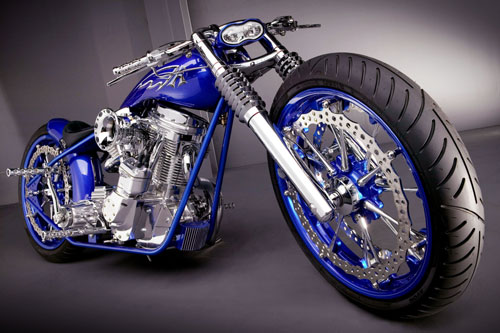
И искренне рад, что страхи
мои оказались напрасными. Арлен Несс оказался приятным в общении,
интеллигентным товарищем, напрочь лишенным каких бы то ни было понтов и
признаков «звездочки» (болезнь такая – не «белочка», конечно, но тоже
приятного мало). С первого взгляда могло даже показаться, что кастомайзер №1,
которому, кстати, в следующем году исполняется 70 лет, как-то уж нарочито
прост. И лишь характерный прищур (ленинский такой, с хитринкой) выдавал его с
головой. Нет, в картишки я, пожалуй, с таким не рискнул бы...
– Арлен, вопрос, возможно, покажется странным, но тем не менее... С какими
запахами в ваших воспоминаниях ассоциируются 60-е годы – время, когда вы
только начинали свою карьеру кастомайзера? Ну, про запах бензина можете не
говорить – будем считать, об этом я и сам догадался. А еще? Пиво? Табак? Или,
упаси боже, «нетабак»?
– Наверное, это запах фастфуда. Мы с друзьями постоянно по ночам зависали в
придорожных заведениях. По сути, такие забегаловки стали настоящими
рассадниками американской кастом-культуры. Не буду отрицать: запах алкоголя,
выпитого в те годы, не так легко выветривается, как хотелось бы. Вначале пиво,
позже я сполна отдал дань текиле. Наркотики? Ни в коем разе! Я всегда
оставался их ярым противником. Даже в тот период, когда мы активно хипповали.
Кстати, в середине 70-х чертова дурь стала одной из причин, по которой из
нашего бизнеса был вынужден выйти мой младший брат Кевин.
– Но ведь он же в итоге вернулся...
– Ну да, в 2004 году. Прошло каких-то тридцать лет...
– А какую музыку слушали?
– В 60-х я основательно подсел на блюз. С тех пор его, родимого, в основном и
слушаю. Однако в конце 50-х я наверняка слушал рок-н-ролл. А кто тогда его не
слушал!
– Должен признаться, что ваш Two Bad лично для меня был и остается
величайшим кастом-байком всех времен и народов! Насколько я знаю, раму без
верхней трубы вы использовали и до него?
– Да, был у меня такой мотоцикл – Magna Cycle. К сожалению, следы его утеряны.
– А еще я видел в мотоциклетном музее Стерджиса аппарат Pandemonium работы
Донни Смита – с похожей рамой...
– Стоп! Во-первых, Pandemonium построен намного позже, чем Two Bad. Во-вторых,
Донни Смит как раз был в числе друзей, помогавших мне достроить Two Bad. Так
что все пристойно и вполне закономерно.
– А стал ли Two Bad первым аппаратом с двумя V-твинами?
– Насколько я знаю, это так.
– Среди профессиональных дрегстеров не было случайно подобной конструкции?
– Вот же прицепился, а? Послушай, даже если допустить, что они существовали, я
о них ничего тогда не слыхивал.
– Арлен, что вам ближе – олд-скул или хай-тек?
– Не скажу! Из принципа! Прекрасно понимаю, что ты имеешь в виду, но сделаю
вид, что не понял вопроса. А если серьезно, я не могу отдать предпочтение
какому-то одному направлению. В идеале, это должен быть сплав стилей, этакий
фьюжн.
– Часто современные кастом-шоу, в том числе чемпионат мира по
кастом-байк-билдингу, упрекают за то, что на них выставляют мотоциклы, которые
толком и ездить не могут. Считаете эти упреки справедливыми?
– На сто процентов! Здесь моя позиция категорична: мотоцикл ни в коем случае
не должен терять функциональности! Для меня это просто очевидно: байк обязан
ездить! Я признаю, что скульптура, как направление искусства, тоже имеет право
на жизнь, но превращать в нее мотоцикл – по-моему, абсурд.
– Спасибо. Не сомневался, что вы ответите подобным образом. Потому что
видел собственными глазами, как вы легко рассекали на 2 Bad 2 по улицам
Стерджиса – словно под вами не двухмоторный монстр, а скутер.
– А то! Кстати, в детстве я гонял на скутере Cushman. Как меня до него
допустил отец, который мотоциклы на дух не переносил, до сих пор удивляюсь.
Наверное, из-за того, что между «Кашменом» и мотоциклом, по его мнению, не
было ничего общего.
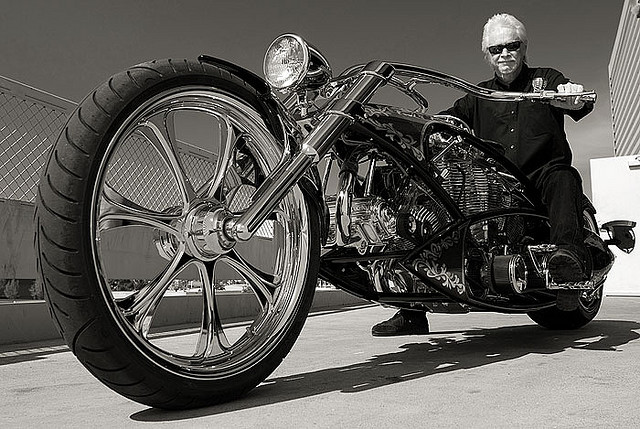 – Если вы не против, еще пару слов о 2 Bad 2. В нем вы использовали раму,
схожую с той, что впервые появилась на Top Banana. Потом эту же тему
продолжили аппараты Nu-Ness и Blue Victory, а теперь она достигла своего
апогея на 2 Bad 2. Вышло просто шикарно! В очередной раз снимаю шляпу!
– Если вы не против, еще пару слов о 2 Bad 2. В нем вы использовали раму,
схожую с той, что впервые появилась на Top Banana. Потом эту же тему
продолжили аппараты Nu-Ness и Blue Victory, а теперь она достигла своего
апогея на 2 Bad 2. Вышло просто шикарно! В очередной раз снимаю шляпу!
– Да чего уж там, обычный двухмоторный мотоцикл.
– Ну-ну, скажете тоже – обычныйѕ Кстати, о скромности. Я тут давеча
проезжал в Сан-Франциско по Ван-Несс-авеню и вот что подумал: как бы вы
отнеслись к тому, если бы городские власти назвали одну из улиц
Арлен-Несс-авеню?
– Что ж, неплохо для пиара! А все, что хорошо для развития компании, хорошо и
для меня.
– Арлен, у вас замечательное потомство, достойно продолжающее дело. По
стопам пошел сын Кори, теперь вот внук Зак туда же. Признайтесь, теплеет на
душе при мысли о том, что имя Ness и в будущем будет неразрывно связано с
понятием «кастом-мотоцикл»?
– Честно? Я действительно очень рад. Вся тяжесть управления компанией легла на
плечи Кори, и он прекрасно справляется с делом. Еще и успевает строить
отличные мотоциклы! По большому счету, Кори рулит в Даблине полностью. Я
теперь не знаю и половины сотрудников, работающих у нас. (Хитро щурится – явно
знает всех.) Я ж нынче – только «по пиару». (На самом деле то, что за Арленом
теперь остались якобы только пиар-функции, это, мне кажется, тоже часть пиара.)
А если серьезно, меня очень интересуют некоторые идеи Зака. Объяснюѕ Среди
молодежи в последнее время встречается все больше состоятельных людей – и это
наши потенциальные клиенты. Поэтому знать, чем дышит молодое поколение, – не
блажь, а необходимость.
– Вмешиваетесь ли в творчество Кори и Зака? Не давите ли авторитетом?
– О чем ты! Они уже большие мальчики! Кори – тот и вовсе седовласый зубр. У
него в Даблине даже отдельная мастерская. Туда я стараюсь лишний раз не
соваться.
– А они в ваше творчество не вмешиваются?
– А вот это им делать совсем не обязательно. (Снова прищурился, стал строгим.)
– Вы купили свой первый Knucklehead за 300 долларов, выигранные в боулинг.
300 долларов для 1966 года – немалые деньги. Отсюда делаю вывод, что вы
неплохо играли! Может, в вас погиб спортсмен?
– Играл, действительно, неплохо. И сумма, действительно, приличная. Вообще-то,
то была обычная мужская заначка. Если бы я имел неосторожность внести эти
деньги в семейный бюджет, жена тут же нашла бы им «правильное» применение –
мебель, например, купила бы или еще какую хренотень. И тогда я не совершил бы
покупку, которая впоследствии изменила мою жизнь.
– Судя по автомобилям, которые я видел в гараже вашей штаб-квартиры в
Даблине, вы неравнодушны к хот-роддингу. Особенно хорош «чопнутый» пикап Ford
1956 года. Неужто никогда не возникала тяга заняться автомобилями плотнее?
– Абсолютно точно подметил – у меня по жизни две большие страсти: мотоциклы и
хот-роды. Что, в общем-то, закономерно: ведь это две грани одной и той же
культуры. Вот только, как ни крути, постройка автомобиля занимает куда больше
времени. Но случилось так, что 45 лет назад чаша весов с мотоциклами
перевесила. Однако время от времени я возвращаюсь к автомобильной теме. Вот и
сейчасѕ Есть тут один проектик. Эх, жаль, со свободным временем полная засада!
– И под занавес традиционный вопрос. Не планируете ли посетить Россию? Тем
более, что, насколько я знаю, мотоциклы вашей компании активно у нас продаются
– лично видел на складе готовой продукции в Даблине партию, готовую к отправке
в Россию.
– Да, дела идут неплохо, и Россию мы, действительно, рассматриваем как одно из
перспективных направлений развития нашего рынка сбыта. И я, конечно же, очень
хотел бы у вас побывать. Надеюсь, мы обязательно посетим Россию во время
нашего следующего европейского тура.
– Ну, и напоследок: не могли бы вы напутствовать добрым словом начинающих
кастомайзеров, которые только встали на эту нелегкую стезю, – дать этакий
мудрый «отеческий совет»?
– Здесь все просто. Чтобы у вас что-то получилось, необходимо только одно:
постоянно что-то делать.
– О’кей, так и запишем: «Работать, работать и работать!» Покорнейше
благодарю за интересную беседу. А это вам на память – «Рашн сувенир»...
– О! Хорошая, наверное?
– Не то слово! Слеза!
(И это, как читатель, вероятно, догадался, была не матрешка.)
Фотографии мотоциклов Арлена Несса
2009 Victory Arlen Ness Victory Vision
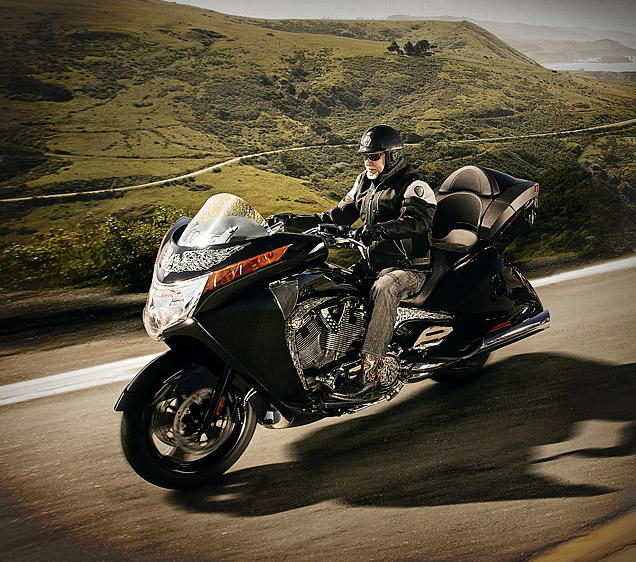
Get Flash to see this player.
Арлен Несс против Роланда Сендса - видео телепередачи: "Создай мотоцикл", Biker build-off -
это соревнование известных и не очень конструкторов мотоциклов, организованное телеканалом "Дискавери".
Продолжительность ролика: 45 минут, язык: русский
Glory Stomper - первый мотоцикл, собранный Сандсом по собственным чертежам на 1,5 литровом моторе от Харли с уникальным бензобаком.
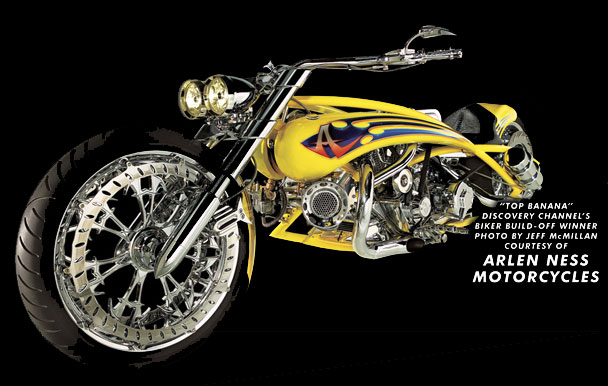
Плод усилий Арлена - двойной бензобак достойный босса, двигатель объемом 2300 куб.см. с верхними распредвалами,
два карбюратора класса "I" и тщательно исполненная ременная передача.

Arlen Ness DEF LEPPARD and JOURNEY
A one-of-a-kind motorcycle customized for the
legendary bands DEF LEPPARD and JOURNEY is being auctioned to benefit Cure
Autism Now. Autographed by members of the bands and featuring the DEF LEPPARD
and JOURNEY logos, this bike showcases the Arlen Ness flair for design with two
of the greatest bands in rock and roll. Neal Schon of JOURNEY and Joe Elliott
of DEF LEPPARD, both motorcycle enthusiasts, contacted Arlen Ness to create the
bike.
"It was an honor and privilege to build a motorcycle for these rock icons. Neal
Schon and Joe Elliott not only rock, they know how to design a motorcycle,"
said designer Cory Ness. "This bike not only rocks, it rolls! Someone is going
to own a piece of history."
"The custom JOURNEY/DEF LEPPARD bike that Arlen Ness Motorcycles created is one
bad-ass, wicked-mean bike with all the frills and best parts that money can buy.
A lucky fan will own this bad boy in just a few weeks. Best of all, the money
is going to Cure Autism Now," said Neal Schon of JOURNEY.
"I concur with Neal that this is not just a bike but an absolute work of
art...some lucky person is going to own this bike and I will be forever jealous
of the fact that it won’t be me!!!! But I will take some comfort in the
knowledge that the money we raise will be going to such a worthy cause," said
Joe Elliott of DEF LEPPARD.
Cure Autism Now is an organization of parents, clinicians and scientists
dedicated to accelerating research to prevent, treat and cure autism — for
individuals and families today, and for future generations.
 Arlen
Ness is one of the best-known builders in the world of custom motorcycles. He
went from customizing his own 1947 Harley-Davidson Knucklehead in the late
1960s to becoming a trendsetter whose designs have been studied—and copied—by
everyone from other bike-builders to factory engineers. He also founded a
mail-order empire that bears his name.
Arlen
Ness is one of the best-known builders in the world of custom motorcycles. He
went from customizing his own 1947 Harley-Davidson Knucklehead in the late
1960s to becoming a trendsetter whose designs have been studied—and copied—by
everyone from other bike-builders to factory engineers. He also founded a
mail-order empire that bears his name.
Ness grew up in Oakland, California. He was always attracted to hot rod cars
and motorcycles.
“When I was in high school, there was a kid who had a Harley, and I thought
that guy was cool,” Ness recalled. Under pressure first from his dad, then from
his wife, though, Ness was locked out of the two-wheel world. “I was into cars—hot
rods. On Friday nights, we’d cruise East 14th Street. That was what you did
back then.
“There was a place where all the guys with bikes would hang out. I’d go by that
place 20 times a night just to look at the bikes. I didn’t really know one from
another, but I knew I liked the ones that had a low-slung look.”
By the mid-1960s, Ness was married to his wife, Bev, and the couple had two
children. Ness was working as furniture mover. He also competed in bowling
leagues that paid prize money and he saved his earnings from bowling to buy his
first motorcycle.
“I used to keep that money tucked away in the back of my wallet,” he says.
“Then one day, I was driving through Oakland, and I saw a bike sitting there
with a for-sale sign on it. The bike was $300, and that’s what I had saved up,
so I bought it.”
Ness took a lot of grief at first from Bev for buying the old Harley, but the
modest purchase would ultimately change the path of his life forever. He
immediately set to work on the machine, giving it a new look with a stretched
gas tank and custom paint. Then he entered it in a show, where it earned the
attention of magazine photographers.
The attention his custom bike got from the show led to him being asked to paint
other bikes. That gradually led to a motorcycle painting business that allowed
him to quit his other job. As a one-man operation, Ness put in long hours, but
his hard work paid off and his reputation grew.
There was just one problem. With a family to support, Ness had no money to buy
another bike that he could build into a new showstopper. So he turned to the
’47 Knucklehead again and again.
“I kept recustomizing it every year,” he says. “I’d paint it and fix it up so a
magazine could shoot it, then I’d redo it for another magazine.
"Untouchable" - 1963-1977

“Finally,” he says, “I saved enough money to buy a second bike.” Years later,
Ness restored his first Knucklehead to the way it was in the late ’60s. It is
now the heart of a California lifestyle exhibit at the nearby Oakland Museum.
Soon after he opened the shop, Ness added a new line to his business: custom
parts. Today, that’s the heart of the company. But not back then.
"There wasn’t much you could do to a bike,” he notes. “You could make a bobber
by putting the front fender on the back tire, but there weren’t many parts
available for customizing.”
Ness started small, getting some used wheels chromed and offering “ram’s horn”
handlebars that he designed.
“I was living on the paint jobs,” he says. “When I’d sell some parts, I’d just
take that money and buy two more. I didn’t take any money out of the store for
a long time.”
But then came an incident that changed his mind about the future of the parts
business.
“A guy I knew was in the military, and he was about to ship overseas,” Ness
says. “He found out that he got something like $2,000 for shipping out, so he
came into the store and bought a whole lot of parts.
I made $100 profit on that stuff in one day. I took my wife out for a drink to
celebrate, and I remember thinking that if I could make $100 a day regularly,
I’d be a millionaire.”
As his parts became known in the
custom-bike world, Ness started to get calls from customers wanting to buy
things that were only available in his store. So he created his first catalog.
“Actually,” he says, “it was just a list that Bev typed up. We had the ram’s
horn bars, some glass fenders—stuff like that, with a price next to each one.”
Ness admits that he had no background in business, so he had a lot of new
knowledge to accumulate.
“I had to learn about shipping and all that,” he says. “For a while, I would
run everything down to the UPS office every day. Then I found out they’d come
and pick it all up. I had to learn every step of it.”
He got into the business at the height of the late-’60s chopper era, when the
Captain America bike from “Easy Rider” was the height of cool. Ness built his
share of choppers, but he had a different vision: “I liked the dragbike
performance look—stretch ‘em out and lower ‘em down,” he says. “Still do to
this day.”
Ness developed that style in bikes like Two Bad, a double-engine Sportster with
hub-center steering and a frame longer than many cars.
"Two Bad" - 1977
That look, combining performance and style, would become a hallmark of Ness design. It was, in many ways, the opposite of the laid-back chopper. An example of one of Ness’ concepts was the dual-supercharged, four-carb, 2,100cc machine with dual belt drive and red bodywork reminiscent of a Ferrari Testarossa.
He’s kept those bikes and dozens
more—every showbike he’s ever built. Many have become significant enough that
they’re on loan to museums and collectors. Together, they form a timeline of
the custom-bike movement in America. Here are just a few of them !
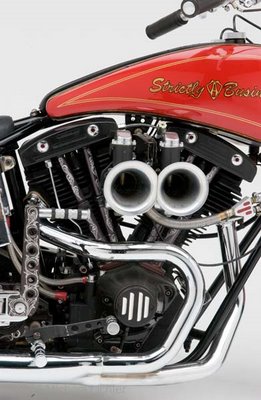
"Blower Bike" - 1987
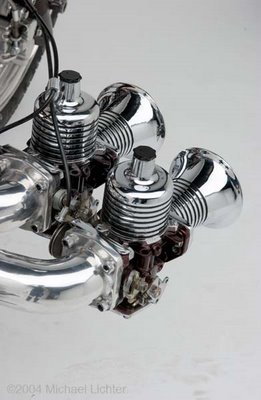
Introducing sporty design in his creation Arlen presented the Team Ness in the beginning of the nineties !
"Team Ness" - 1993
Ness was also the father
of the famous "taildragger" fenders which was mounted on the Red Flame Chopper
and a serie of bikes in the same style using knuckelhead, shovelhead or evo
engines. Again this was completely new !
In the nineties Arlen started also to work with streamlining body work with a
serie of great bikes: Mona Lisa, Convertible Sled (with removable fenders),
Arrow or the great SmoothNess :
"Mona Lisa" - 1994
"Convertible Sled" - 1997
"Arrow" - 1999
"Smooth-Ness" - 1996
Although Ness’ machines were some
of the wildest customs of their era, the earlier bikes still incorporated
plenty of stock parts. But then came a revolution in the custom-bike field,
resulting from the introduction of CNC machining. Ness was among the first
people in the motorcycle industry to recognize the potential of this technology,
which he picked up from hot-rod fabricators. He quickly tested it with
carved-billet aluminum mirrors. The question, though, was whether anyone would
pay the premium prices billet parts would command.
“At the time,” Ness says, “our mirrors were probably $50. And we thought,
‘Who’s gonna pay that for a mirror?’ But we made some, and they sold.”
So did the billet grips and levers and engine covers and triple clamps that
followed. And what started as a small, typed order sheet turned into a major,
270-page four-color catalog.
In time, the company built around Arlen Ness’ painting skills was gradually
transformed into a national mail-order house with dozens of full-time employees,
including every member of the Ness family. Arlen remains the head of the
company, while his son, Cory, became vice president and the man in charge of
day-to-day operations. He’s also become a skilled motorcycle customizer in his
own right, with his work recognized alongside that of his famous father.
Bev, the woman who slammed the door on Ness when he brought home his first
motorcycle, is now the company’s chief financial officer, and their daughter,
Sherri Foxworthy, serves as Arlen’s administrative assistant.
Amazingly, all of this growth took place within the company’s East 14th Street
headquarters. Walk through the showroom, and you entered a labyrinth of narrow
aisles, all crammed with Arlen Ness products.
With the custom bike business booming in the ’90s, Ness took the opportunity to
build two of the most memorable creations in a highly memorable career.
The first is officially called “Ness-talgia,” but to just about everyone, it’s
the ’57 Chevy bike. It recalls that classic car almost perfectly, with lines
that are so flawless, you’d swear the parts came directly off the original.
Except for the headlight bezel, they didn’t.
“There’s a guy who does graphic work for us—Carl Brouhard—and that was kind of
his idea,” Ness says. “We thought we’d do it for fun, but it ended up being a
bike that’s known all over the world.”
Ness-talgia was unveiled in 1995,
and a year later, Ness trumped it with Smooth-Ness, a flowing design that is
art from any angle. He says the bike was inspired by a bronze that he found of
a Bugatti automobile. Ness sketched out the design on paper, then turned over
his drawings to Craig Naff, a fabricator who regularly makes parts for his
projects. The parts came back so beautifully formed that Ness first showed the
bike unpainted.
To many, those bikes represent the pinnacle of the custom-bike world. And even
Ness himself admits that if he could keep only three motorcycles from his
entire career, he’d chose those two plus his original ’47 Knucklehead—the bike
that started it all.
Arlen has also developped really crazy engine stuff apart the double engine or
superchargers with his OHC and Double OHC evos in 1998 and 2001:
"Aluminium OHC" - 199

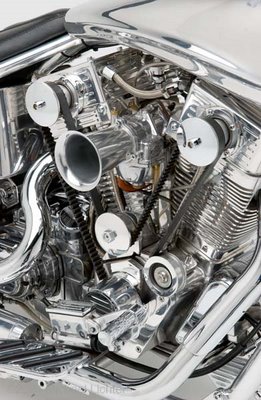
"Double OHC Evo" - 2001
Ness never stopped evolving his
company. In fact, in the fall of 2005, after 36 years in the business, Ness
moved to an all-new shop that seems more appropriate for what his business has
become. Arlen Ness Enterprises’ new home is a 70,000-square-foot facility under
construction about 10 miles away in Dublin, California. The building will
feature a huge showroom where new parts for sale will be arrayed around classic
Ness designs of the past. Behind the scenes, there’ll be more space for catalog
inventory and more space for creating new customs.
He’s also branching out in new directions through a partnership with Victory
motorcycles. Ness has become a Victory dealer, and he’s created a couple of
customs based on that platform. In addition, Victory is selling an Arlen Ness
Signature Line of parts and accessories for its bikes, and the company has said
that Arlen and Cory Ness will serve as design consultants on future Victory
models.

"Blue Victory" - 200
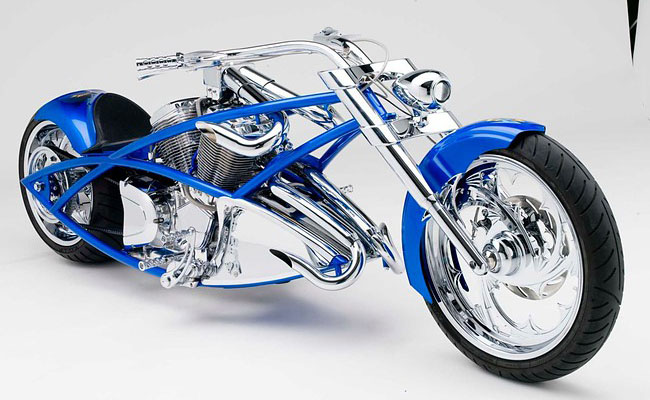
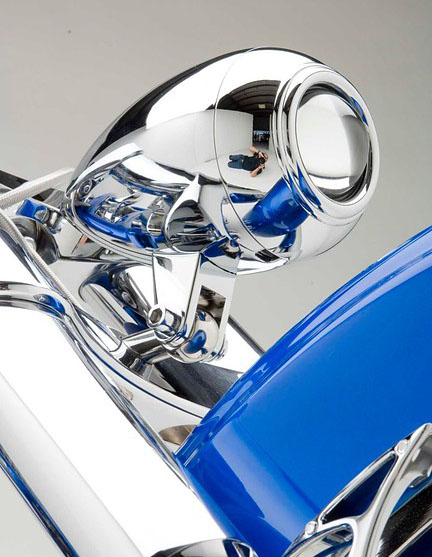

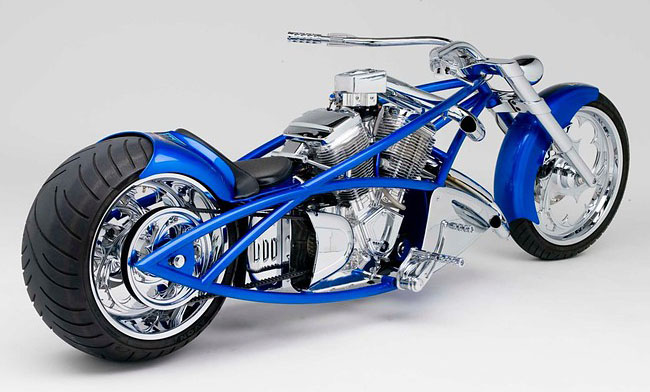
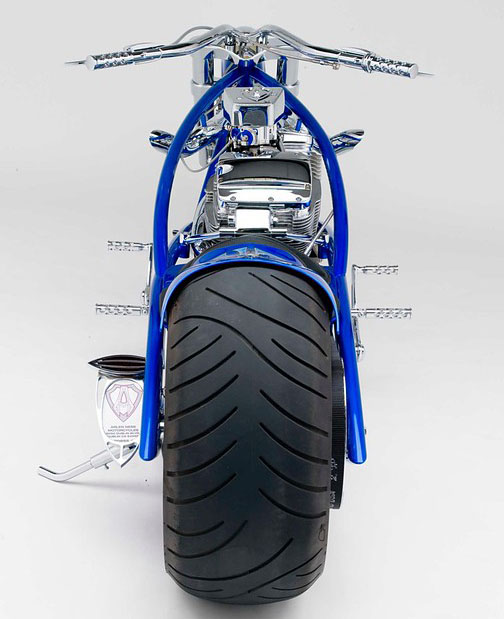

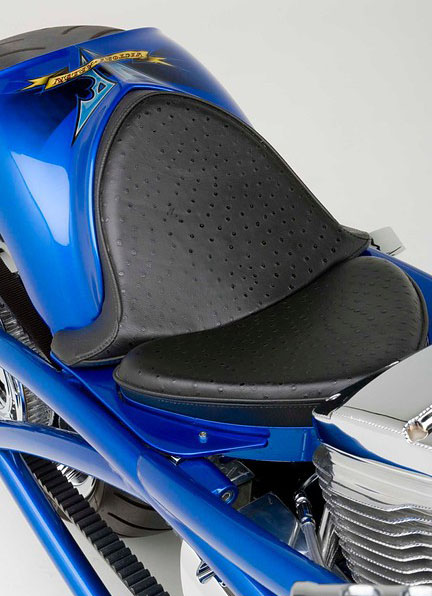
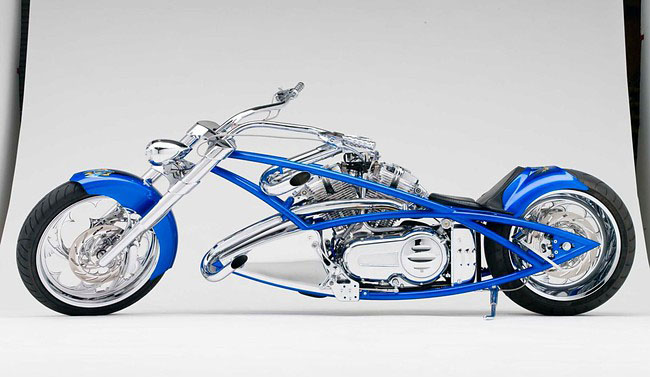
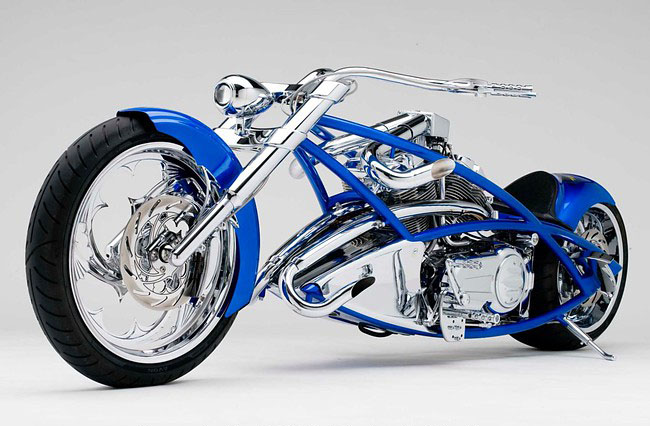
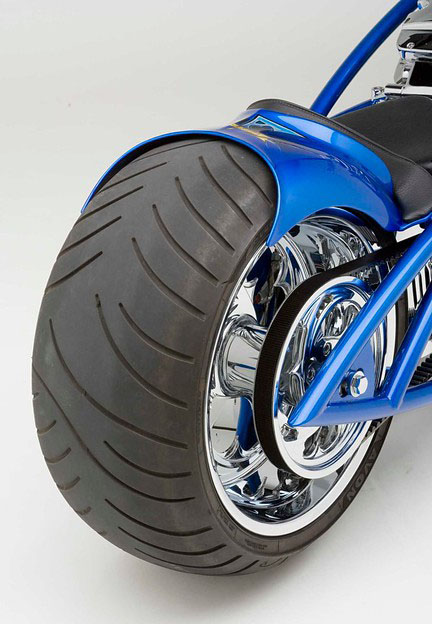
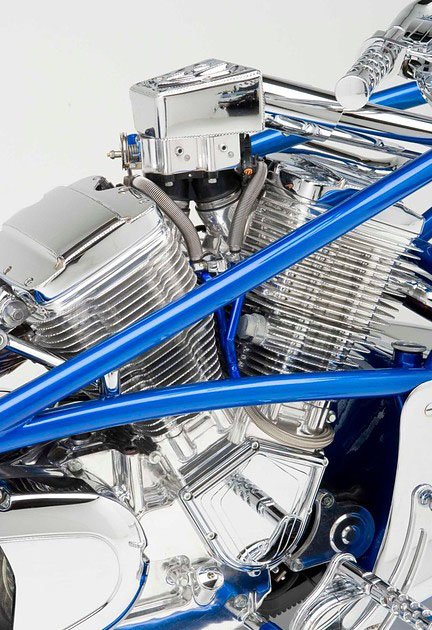
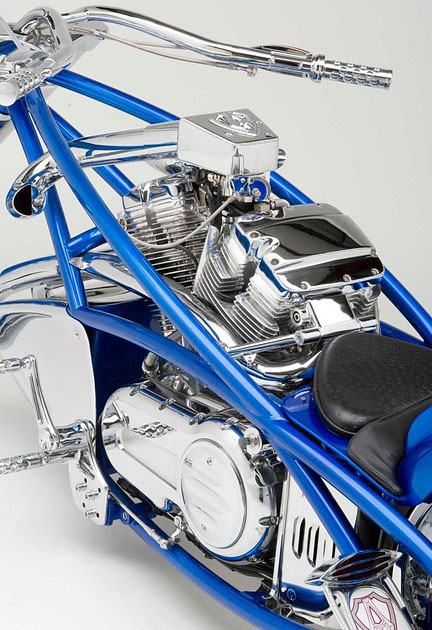
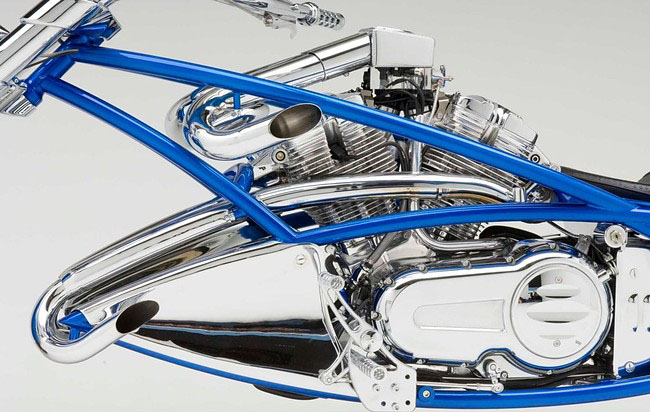
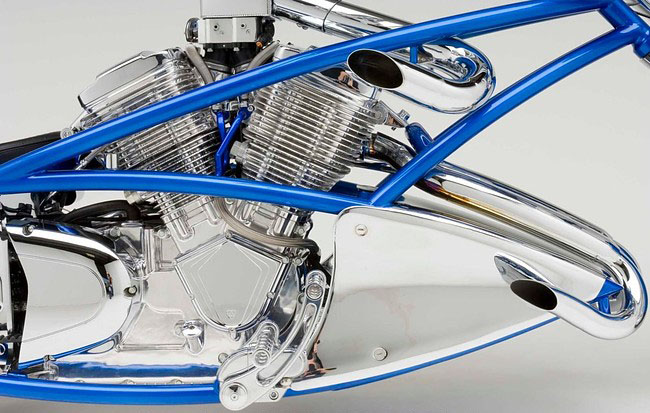
"2 Bad 2" - 2007
But there’s more. Working with Harley dealer Bruce Rossmeyer, Ness opened new
Arlen Ness Motorcycle stores in Daytona Beach and Miami, selling various brands
of American cruisers plus the full Ness line of parts.
And, he says, “If the stores go well, we might build a motorcycle of our own to
sell in them.”
He admits he’s done some preliminary work in that direction, and has a
powerplant in mind. The rest of the bike, of course, won’t be a problem. After
all, he’s got a catalog full of every part a person might need to build a
motorcycle.
"My dream has been to be able to put out a true Arlen Ness production bike," he
said. "It has been something I've been wanting to do for many, many years, and
now it has finally happened."
Along with his son, Cory Ness, who runs Dublin-based Arlen Ness Enterprises,
the duo has designed three motorcycle styles that are now available to the
public under the Arlen Ness name. They've designed lines of motorcycles for
other manufacturers to produce and many prized custom bikes, but this is the
first time that Arlen Ness Enterprises has put together one that is all its own.
What’s perhaps most amazing, though, is that through it all, Arlen Ness, the
king of the customizers, remains grounded in the place where it all began.
And waiting in the Ness' wings is Cory's son Zack, 17, who already has designed
a bike of his own. The Ness family with 3 generations of custom builders was
present for the S&S 50th anniversary event with 3 bikes from Arlen, Cory and
Zach !
After all these years, Arlen still turns out new designs in an office that’s
only a sidewalk-width away from East 14th Street—the road he once cruised,
wondering if he’d ever have a motorcycle of his own.
You can even meet him easily as this man is not only a custom motorcycles
living legend and icon but especially a great man with "a personality made of
gold". I met him once in France years ago and I am sure he has not change his
way and good personnality !
Источник:
http://zelastchancegaragedu78.blogspot.com/2008/12/arlen-n.html
продолжение здесь
© 2008 - 2017 motoSvit
© Разработка и поддержка: motosvit
Ссылка не обязательна, однако все права
защищены!